

There are many ways to personalize your computer. After all it's called a PERSONAL Computer, so you might as well make it look and work the way you want it to, you don't need to leave it looking like an advertisement for ASUS (in this case, or your computer manufacturer).
If you've been a long-time PC user, with every new version you've found that Microsoft seems to hide things (move them from where they use to be to some "better, more logical" place, in their thinking). Windows 8 seems to have moved more things than most new versions, and what's more confusing is that many things have moved to, and can only be accessed from the new Windows 8 side and not from the desktop. This is certainly true of settings, many things you can still access from the Control Panel, others you can only get to via the Settings icon on the Charms Bar (the one that pops out from the right side of the screen when you move to one of the right-hand corners.
When you touch (click on) that Settings icon you get a panel with these choices on the top:
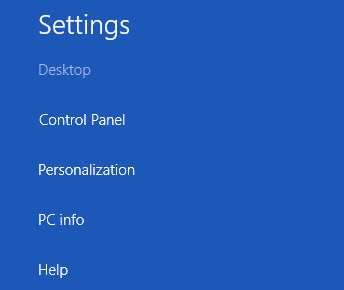
And these icons on the bottom:
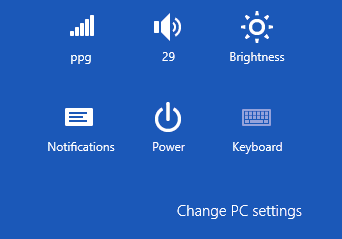
All the choices at the top take you back to familar places in the Desktop world. All the choices on the bottom keep you in the new Windows 8 App (Metro) world, these icons allow you to:
Let's quickly explore all the tabs associated with these new settings (I'll just show you the screens and occassionally comment, click to enlarge any screen):
Tabs across the top allow you to change the Lock Screen, the Start Screen, and your Account Picture:
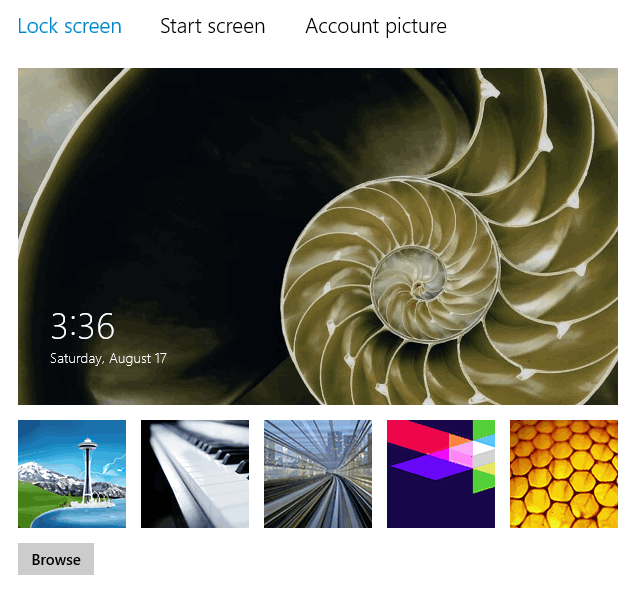
(I haven't explored the Lock screen apps, they're probably more useful on a tablet or
smart phone; especially since I don't lock my laptop and/or desktop.)
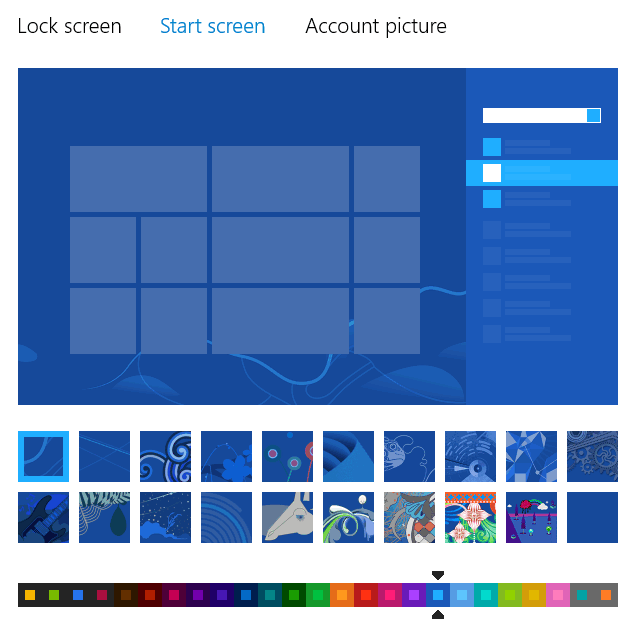
Lets you add a background to the Windows 8 Start screen and change the color you choose during initial setup.
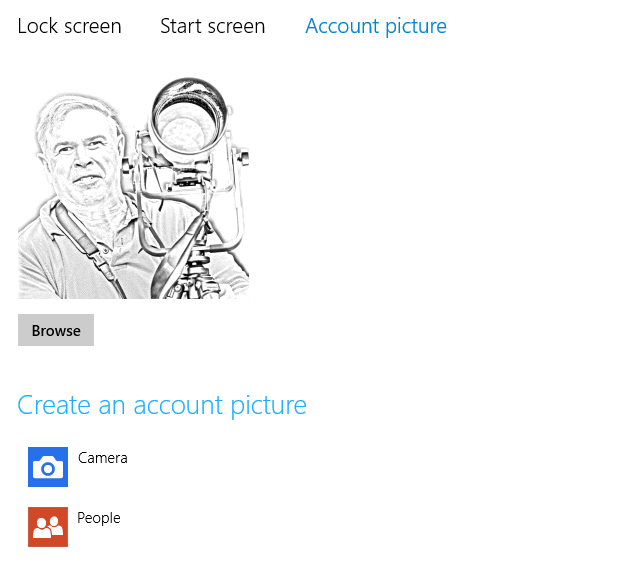
I recommend choosing a picture of yourself, it will appear in various sizes and places.
Use the browse button to pick on, or click on camera to take a Selfy.
This is where you have to go to add users. I recommend you add at least one other user with Administrator privalages. Several times I have seen a virus make an account totally unusable, but with another account everything worked fine. I could then create a new account, move the Documents, Pictures, etc. from the user that was attacked and delete that user and everything was fine. Here you can also explore the advantages(?) of a Microsoft Account. You can also switch back, but if you originally setup the account as a Microsoft Account the folder in Users continues to be named with an e-mail address you probably don't use. The only solution is to create a new Local account and move any data, then delete the original account.
This is where you turn off annoying notifications from Windows 8 Apps.
Important: During the initial setup Windows 8 no longer asks for your time zone, they must think everyone who uses a computer lives on the West coast of the US. On the General tab use the pull-down to change to your time zone if you didn't change it when you set the clock.
The Devices tab is where you add printers, luckily Devices and Printers still appears on the Control Panel so you can still add them there as well.
Some of the things you can sync across PCs if you have a Microsoft account. Automatic syncing is great in theory, but I've had programs that do automatic sync really screw up enough times that I really don't trust it. (It took me hours to undo the mess, and I'm still not sure what I lost.
I recommend specifying your home network as a Private (as opposed to Public) network. Then you can mount drives from other machines if they have been shared first. You'll also want to share drives on you Windows 8 machine. Personally I don't use home groups.
With automatic Windows updates off, the only thing you can do here is turn on Windows Update on. Instead use Windows Update on the Control Panel.
Note: You close this Settings App like all other Apps, grab at the top and drag off the screen at the bottom.
As we saw at the top of this page, you can get to the old Personalization dialog by choosing it near the top of the Setting screen. You can also still get there from the Control Panel and the old trick of clicking on right-clicking anywhere there is a BLANK spot on the desktop and choosing Personalize:

still works to. The Personalization dialog now looks like:
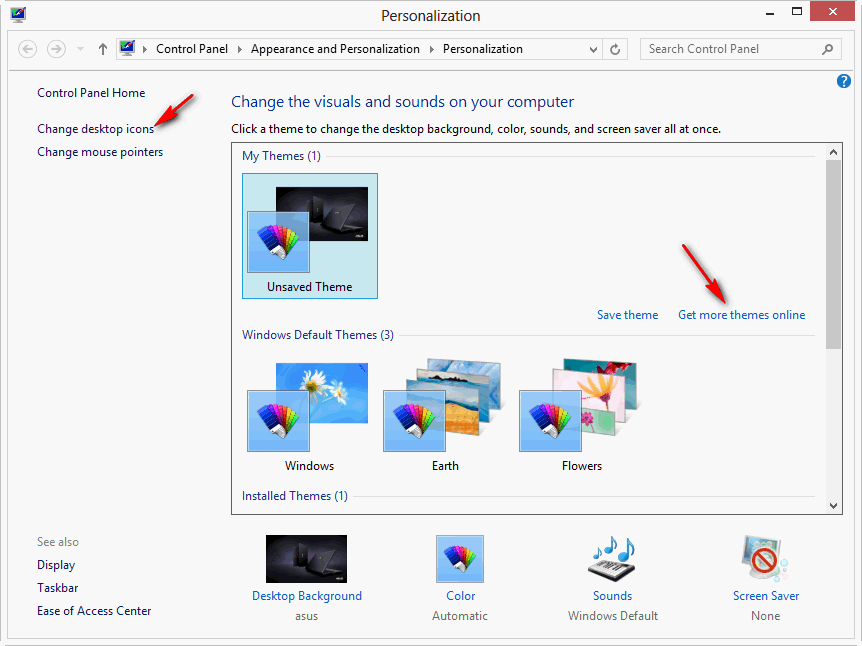
If you haven't already, I recommend adding a "Computer" icon to your Desktop (I always put it in the upper left corner). Click on Change Desktop Icons (above) and then in this dialog box check the box next to Computer and say OK:
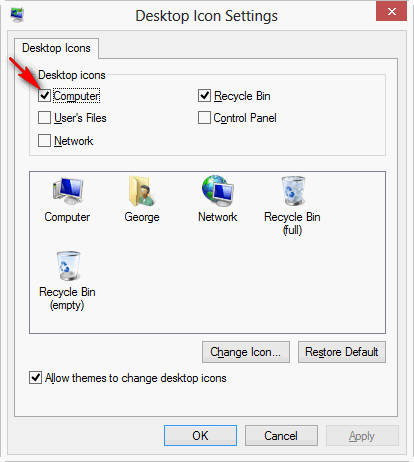
Windows 7 gave you a lot of nice Themes, by default in Windows 8 there are only a couple and I don't really like the Desktop backgrounds (wallpaper). Instead you have to download and install additional Themes, click on "Get more themes online" above. My advice is to download two or three you might like and try them out.
If you click on Get More Themes Online, you first go to a page of "Recent Themes", my advice is to pick a category (on the left that interests you:
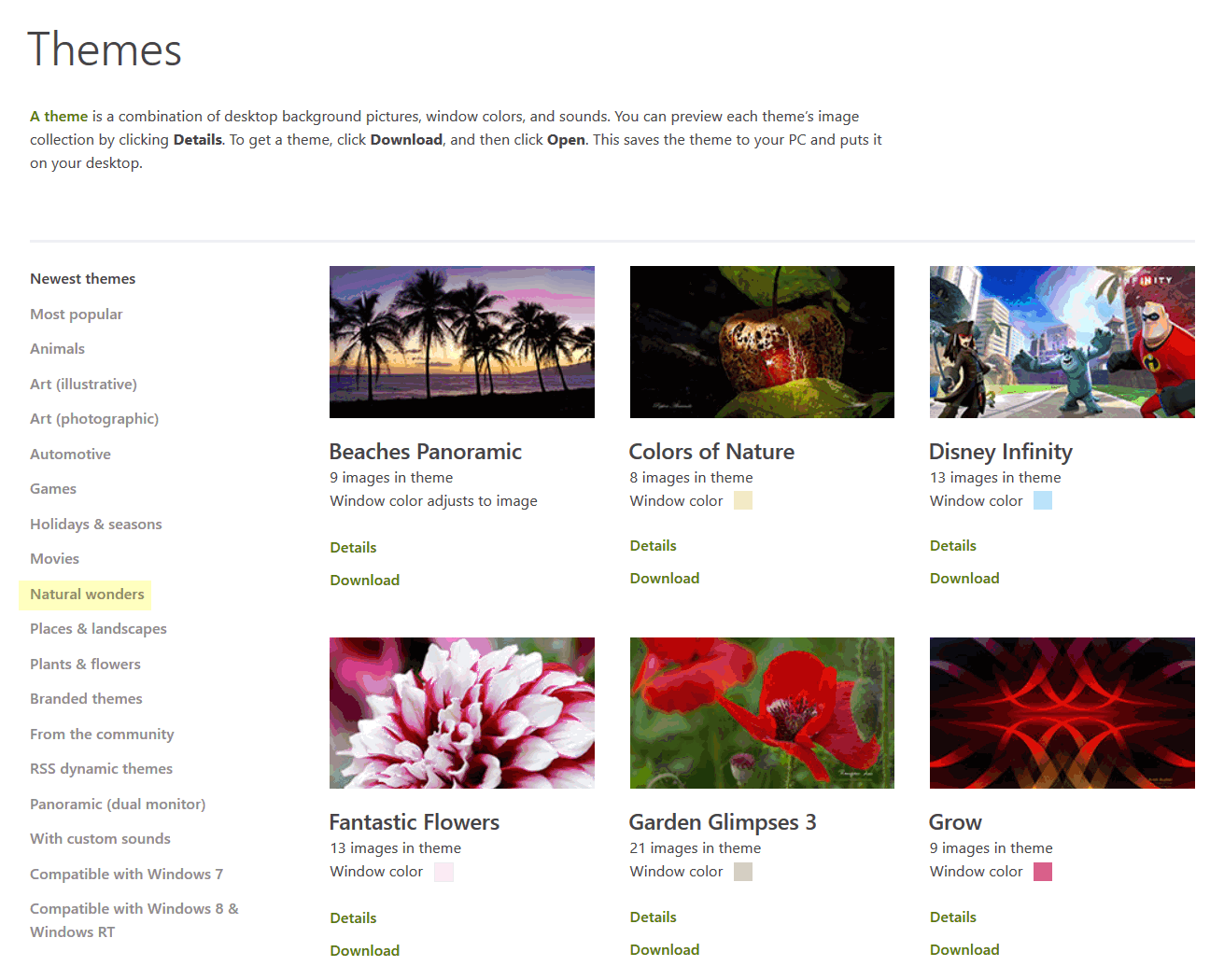
I picked Natural Wonders and there about 70 choices, here's a sample:
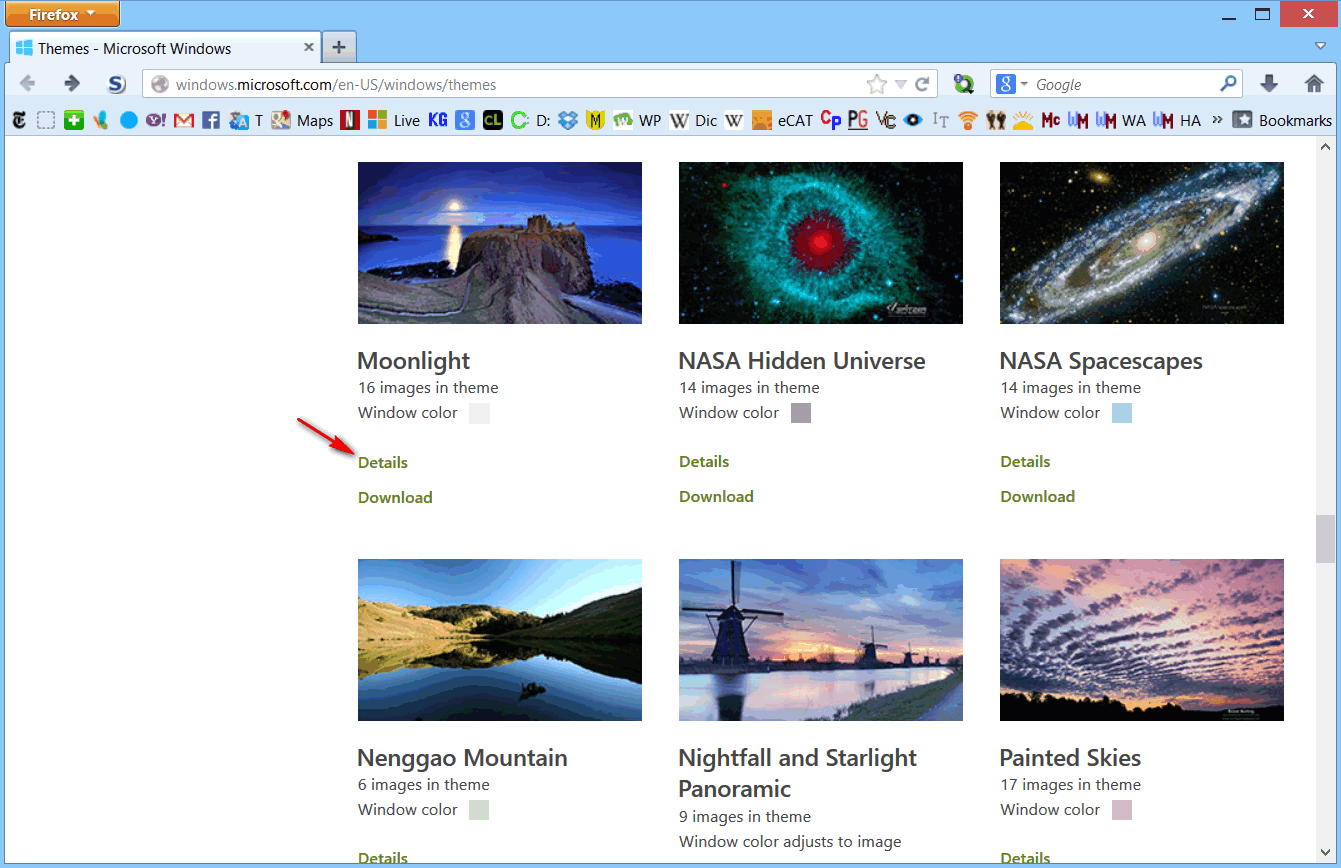
You can pick one and click Download, or click Details, you see something like this:
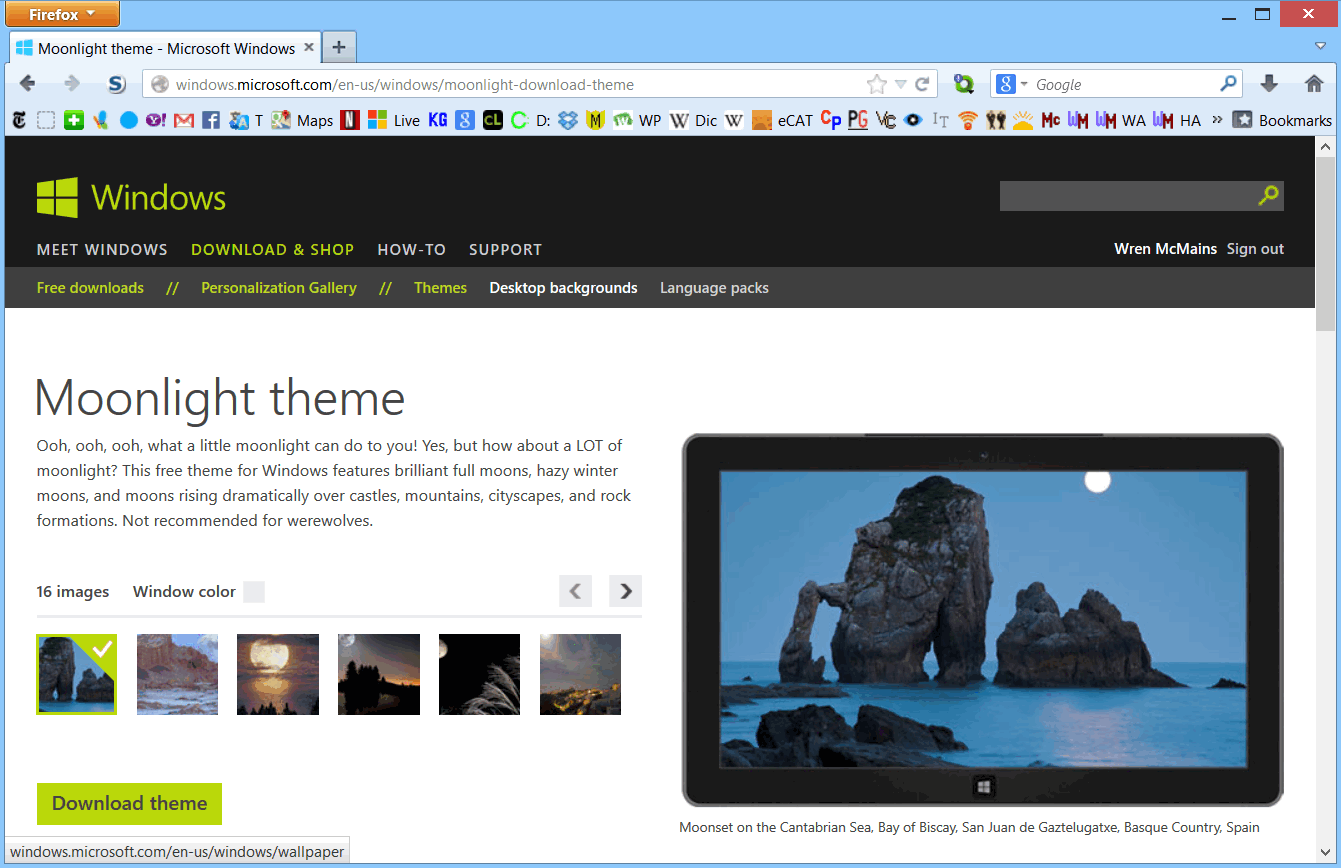
Click Download and choose Open with Personalization CPL which will install it (there's no reason to save the install file):
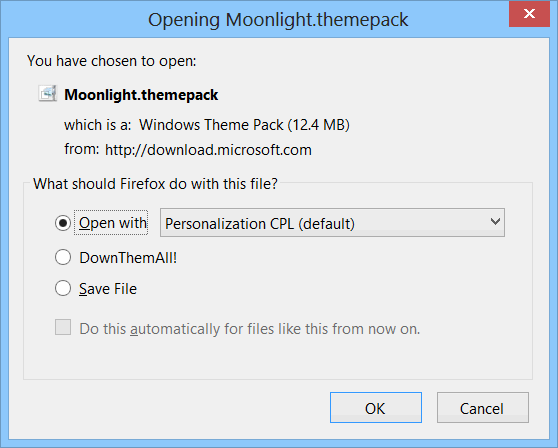
This not only installs it, but makes it the current Theme:
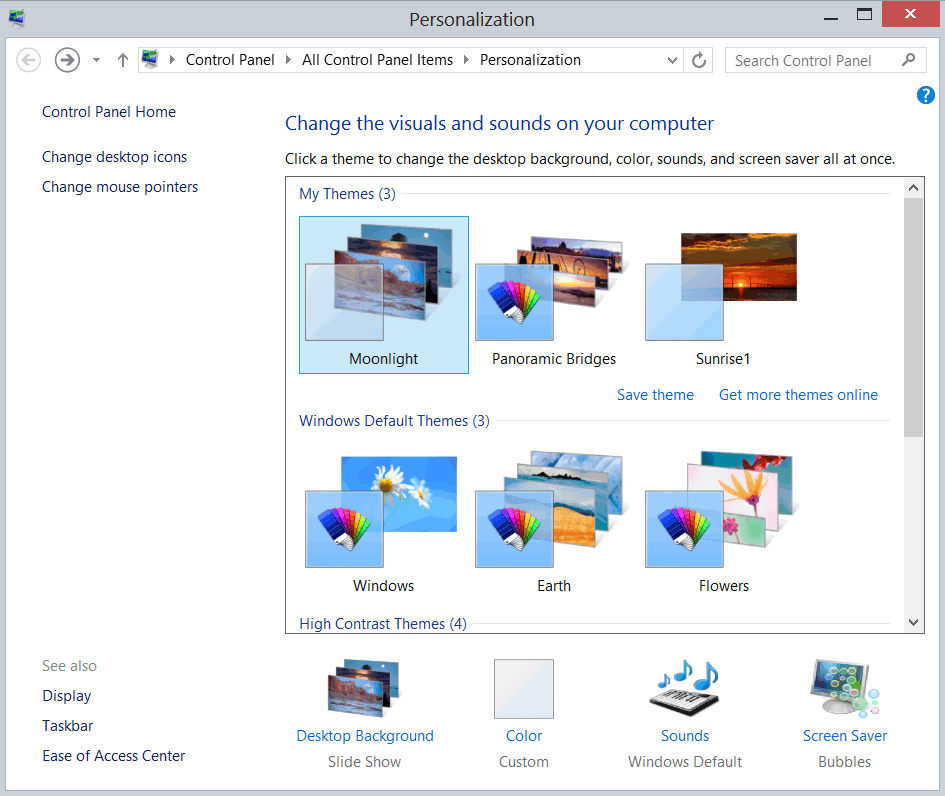
New features of Themes with Windows 8 include window border colors that change automatically with the background (indicated by the color swatches on the screen above instead of an individual color) and backgrounds that will span across two computer screens.
You might also want to change just the desktop background, using one or more of you own images. (Starting with Windows 7 you could select several backgrounds and have the background change automatically every X minutes.)
Somewhere under my Pictures folders I created a Wallpaper folder, and under this I created folders for backgrounds with different aspect ratios. For example, on my own laptop the screen resolution is 1920x1080 (a 16x9 aspect ratio), so I created a 1920x1080 folder and resized and cropped images I thought would make good backgrounds to this size and put them there.
To change the background, click on Desktop Background (bottom of the screen above) and then use the Browse button to select the folder with the images:
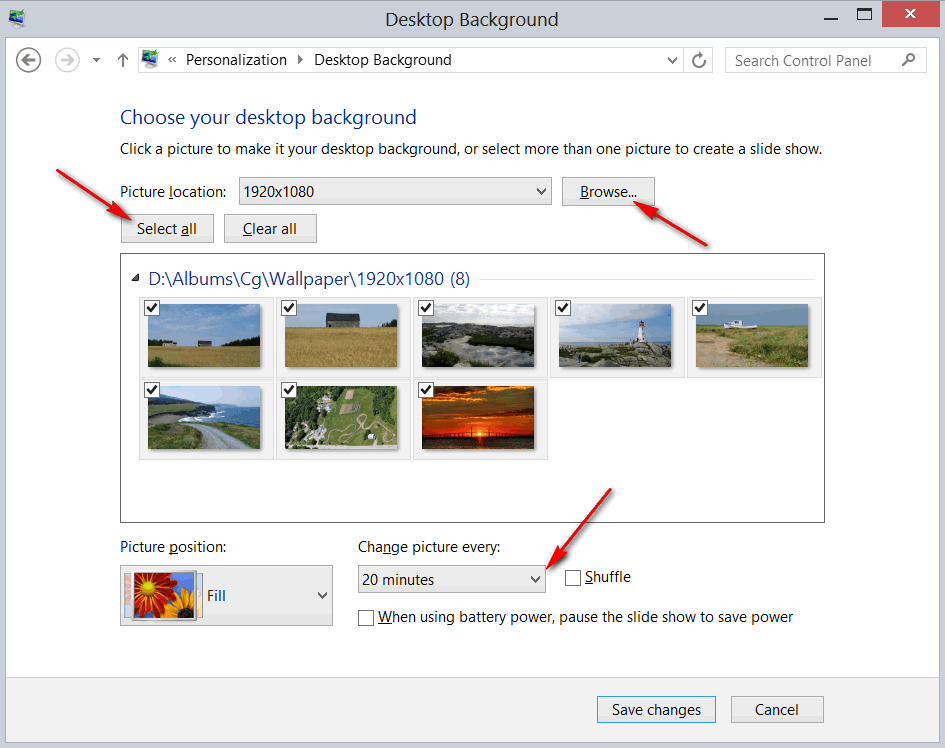
Select the image(s) you want to use by clicking on the boxes in upper left-hand corner of the image, or use the Select All button and unselect the ones you don't want to use. Change how long each remains the background using the pull-down. Checking the Suffle box will make the order random.
For the most part I've stopped using screen savers, choosing to just power down my monitors if I don't use the machine for some number of minutes. I notice when I installed the Moonlight Theme above, it changed my screen saver from None to Bubbles.
One Screen Saver that is nice to run for a few minutes prior to powering down the monitor is Photo Gallery (choose it using the pull-down below). Then click on Settings to randomly pick from all your pictures, or just pictures in a certain folder tree (here I've picked the tree under D:\Albums:
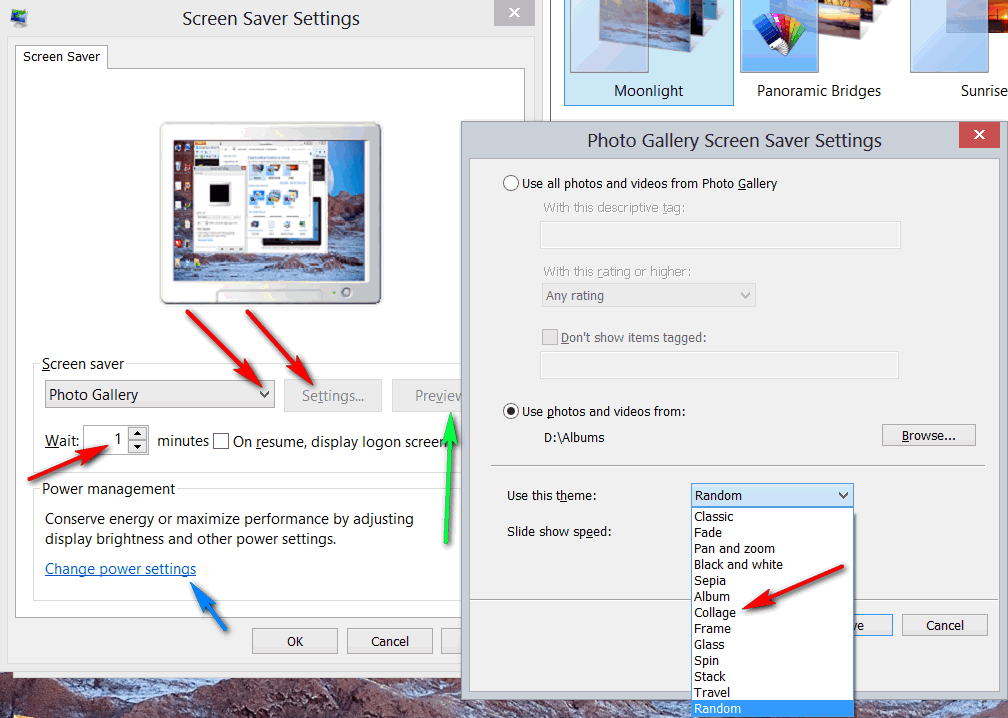
Wait is the number of minutes to wait until the screen saver kicks in, 1 minute is way to little, but you might want to use it for a longer test than you get with the Preview button (green arrow). I sort of like Collage as the mode (theme) used to display the images, but you can experiment with other choices in the pull-down list. Notice that there are all kinds of other options for picking images displayed: Ones you've given a Star rating of more than X stars, ones with a certain keyword tag, etc.
Be sure to check the Shuffle box (hidden by the pull-down above) so it selects random images. Also while you're here click on Change Power Settings (green arrow) and then Change Plan Settings to verify the amount of time before your monitor turns off.
In the same section of Setting up a Vista New Computer I discussed Backgrounds and many other Personalization options in more detail, most of it hasn't changed. You might want to checkout Personalization in Vista
Suggested next choices: